The Shaolin Plot (1977)
Directed by: Huang Feng
Written by: Huang Feng
Starring: Casanova Wong, Chen Hsing, James Tien, Sammo Hung
AKA SI DA MEN PAI
HONG KONG
AVAILABLE ON BLU-RAY: 20TH JUNE, from EUREKA ENTERTAINMMENT
REVIEWED BY: Dr Lenera
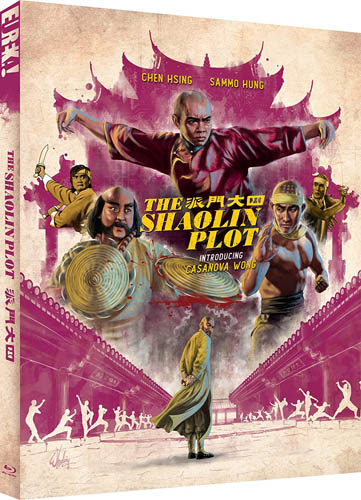
The Manchu Prince Dagulen is after the secret manuals of the four great martial arts schools, because only by mastering all their techniques can he rule China, and is visiting the Wu Tang School with a lethal Tibetan fighter named Dummaraga also arriving soon to aid him. However, after an unsuccessful assassination attempt by the Beggar school, the Wu Tang master Feng sets most of the Wu Tang manuals on fire while his son Little Tiger flees with the one remaining manual. Tiger is given sanctuary by Shaolin monk Puihui who loses his eyes fighting Dummaraga but begins to train Tiger in the Shaolin style. Meanwhile Dagulen is after the Shaolin manuals and also thinks that the Shaolin Temple is harbouring rebels….
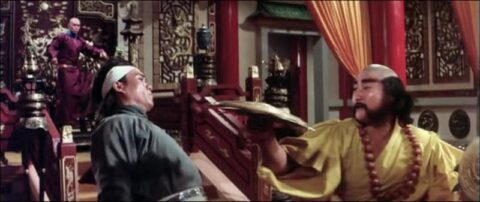
One of the least known and seen early Sammo Hung films, I’d never even heard of Shaolin Plot until a month or so ago. Hung himself isn’t the hero [that would come the next year in Iron-Fisted Monk which was produced by this film’s director Huang Feng]; instead, he’s the prime secondary villain, while James Tien, doomed to be best known as the guy who was cast as the lead in The Big Boss to be replaced by Bruce Lee and demoted to secondary lead after just a few days shooting, is the main good guy. For some reason I expected this to be decidedly inferior to the great Hung classics that we’ve been seeing from Eureka Entertainment, but actually it’s a very strong picture in its own right, if different to the ones that came after. There’s some interesting things already being done with plotting, some nice turns and even surprises being added to the expected ingredients and indeed the much employed premise of Manchu Vs Shaolin. Of course there’s plenty of fighting; it’s not quite as much as we’re used to and the brawls are sometimes disappointingly short, but Hung’s choreography already brings in some fluidity and diversity of movement to the established style of screen fighting. Made before Jackie Chan’s Seasonal twosome stormed Asian box offices, it’s not at all a comedy kung fu flick though there’s a bit of humour hear and there. Most interestingly, it attempts some depth, showing the conflict that lies in the Shaolin Temple between the monks who believe in a totally peaceful way of life and those who are happy to fight, and depicting the temple itself with both a documentary-style realism and an almost mystical awe at the same time, which, along with the relaxed pacing of its middle section, seems to recall King Hu, especially his masterpiece A Touch Of Zen. Hu tends to be treated with reverence by critics and the likes of Feng looked at as just journeymen, but Feng was clearly trying to make something a bit artistic himself here.
Four statues that look very much the same introduce the film and their names spell out its Chinese title Four, Great, Men, School. Lingering shots of the Shaolin Temple and its students take up the main titles, after which we’re at the Wu Tang Temple and there’s a lot of stress because this nasty Prince Dagulen is visiting, not to mention some confusion for the viewer because the setup isn’t done with much in the way of clarity. At a party, the Assassin Beggar accidentally knocks over a glass and gets himself into a fight though he mostly just dodges and rolls around, then when the Prince arrives tries to kill him but is himself killed, though you’re more remember the aide who’s accidentally gets a chicken bone in the eye, the first of several very vicious moments. Killed soon after is one of the Wu Tang heads, beheaded by Dummaraga’s cymbals. He uses them like a double flying guillotine, the cymbals spinning through the air with deadly serrated edges while an odd sound effect is heard, though the coolness is lessened by Hung’s shoddy bald patch. After a few false starts, we get our first proper fight, or rather two fights at the same time. Feng agrees to hand over the manuals, but only if Dagulen promises him that his son Tiger will be allowed to go free, otherwise he’ll burn the books. He breaks his word, setting them alight anyway, while Tiger is chased all over the countryside for sometime by Dummaraga and his men. He hurtles down a forested hill and rolls onto a set which is the home of Puihui, a Shaolin monk who lives in isolation because his prioritising of fighting goes against the ethos of the temple, though Puihui does try courtesy first. He’s more than a match for these ruffians and even smashes Dummarags’s cymbals, so the latter hurls some pieces into his face. Puihui can still fight, but tells his son to give over the remaining book.
Things significantly slow down as we spend much time at the Shaolin Temple, a majestic Korean temple posing quite convincingly as it, and a chilled atmosphere provided by the lengthy shots and frequent singing in the background. Too chilled maybe for some viewers, though the tension of the main plot is never lost. First of all Dagulen visits and demands to see both the Abbott and the place’s records, but is frustrated by the rules and the monks who can turn from silently praying to formidable guards in a second. The haste and arrogance of Dagulen is nicely contrasted with the attitudes and vibes of the monks. “Won’t you sit down, it’s much more relaxing” says the Head Abbott, played by the director, but Dagulen’s never going to do that. He leaves with nothing, but soon after that either he returns in disguise. The plotting really is rather good after the awkward start, with turns coming across as natural and not designed simply to surprise. While we do get to see eggs being punched on a straw dummy, the training sequence is rather perfunctory. However, it’s both believable and inspired that Tiger, after doing much fighting, finds Dagulem too much to handle so two Shaolin students, played by Casanova Wong and Kwon Young Moon take over, even though it would have been better if the two men had been built up more beforehand. Tiger would be tiring, and – well – Tien, while a reasonable actor, isn’t a screen martial artist of note; he’s solid, performing some of the required moves but clearly aided greatly by editing, not to mention lacking a personal style and a strong screen presence.
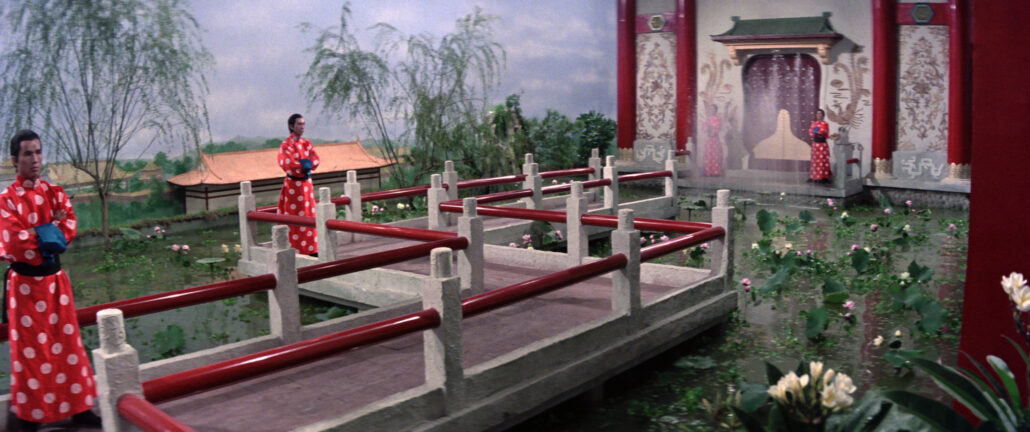
A shocking bit of violence appears every now and again, climaxing when a person is set on fire which is shown in surprising detail. The balance between weapons and unarmed combat is pretty much even, though some of the fights feel somewhat cut short just as we’re getting into the rhythm, though then again this movie did try to be a bit different and is just as interested in lengthy wordless sequences like a forest pursuit. After a few tiny exchanges to whet our appetites, we have several of Dagulen’s men fighting several Wu Tang chaps with good work involving the spear and the dagger chain while Hung also joins in and has his first brawl with Tien. Soon after that, Kam Kong’s Shaolin Master bests a few men and Hung’s character rather quickly, lessening the menace of Dummayaga even more. Then it’s mostly plot and mood until Puihiu is targeted. The bad guys put a lot of spiked mats on the ground outside Puihi’s house’s door which seems an example of going to far much trouble, seeing how much trouble they would have been to transport. Tien soon fights several monks and Casanova Wong on his own; he then disappointingly kills two main bad guys rather easily. Under Hung’s fight directing, Tien is certainly pushed to do his very best, and his duel with Chen Hsing as Dagulen is amazing; for most of it it’s two sieis vs two knives, and there’s a glorious moment when the action suddenly speeds up, which doesn’t look like it was done by shooting it at a higher frame rate at all. Hsing is clearly a trained martial artist, and is also highly menacing and seems like a match for Wong and Moon even though the super kicker shows his utter mastery in several showstopping moments. In one shot Wong performs a total of seven lighting fast kicks without his foot touching the floor. This epitomises why we love this genre!
Tien features in a particularly daft bit where, after aggressively entering the Shaolin Temple and fighting several people there, claims that he tried to tell them why he was there, something that he didn’t do at all. But then one wonders if that was intended as a joke, much like an earlier bit when Dagulen shows up with a false eye bulging out and is asked by a monk, after putting some ointment on it, “how bad is it, is it hurting you”? Hung, who at one point admit that ““I like to live a life of luxury, my services go to the highest bidder”. and even cries to his men “You bastards, you’re no good here in a fight at all”, is given some good lines. But in contrast with what generally followed, goofiness is limited, and we’re invited, for example, to admire the purity and starkness of the lives of the Shaolin monks yet question its wisdom; for example, is punishing two sinners by having them confined to large holes for day after day the right thing to do? And should somebody who’s dedicated to peace take up arms if necessary? Puihui’s an outcast, but maybe using Shaolin techniques to right wrongs is a good thing to do. Of course the screenplay by Feng doesn’t go deep into any of this – the novel by Ni Kuang which this film is based may have done that, but you may be surprised that you’re being asked to think, and then there’s also the fact that cinematographer Yu-Tang Li seems to be have been given more time to do well composed set ups, along with a surprising number of slow tracking shots and even quiet scenes. Two lovely garden sets are employed, if not quite to their full advantage.
Familiar faces are everywhere – Fung Hark-On, Lam Ching Ying, Mars, even Yuen Baio and Yuen Wah in tiny roles. Chiang Cheng-Ma is notable as Dagulen’s chief servant who even crouches on the floor to provide something for his master to sit on and then grins for some reason, though Sing’s deaf and dumb beggar turn, with his weird noises, will seem just nasty to some today. Wu Ta Chiang’s music score, performed as the credits tell us by The People’s Association of Singapore, is often very busy but at least it contains no pilfered western film music. Chiang scored three of Hu’s films, and a couple of cues near the end are taken from A Touch Of Zen, a film which seems to have influenced this one quite considerably, with even the ending of a fight showing up in another. Shaolin Plot doesn’t match up to a Hu Film, but it still amounts to rather more than you may expect. The action aspect may not be entirely satisfactory despite bits of brilliance, but in a film that’s pretty good all round that doesn’t matter very much.
Rating: 









Eureka present The Shaolin Plot in a typically vibrant restoration. Characters sometimes seem squashed on the far sides, but that’s because of the shooting format. Detail is very clear and both grain and colour balance are even.
SPECIAL FEATURES
Limited Edition O-Card slipcase featuring new artwork by Darren Wheeling [2000 copies]
Original Mandarin mono audio
Optional English dubbed audio
As usual, I watched most of the film with the English dub. It’s a decent track, a bit more seriously performed than usual.
Optional English Subtitles, newly translated for this release
New feature length audio commentary by Asian film experts Frank Djeng (NY Asian Film Festival) & Michael Worth
Two audio commentaries by these two pairings is becoming increasingly regular on these releases, and that’s certainly a plus, with both tracks always contrasting nicely in approach. Djeng and Worth are very much on form here; in fact this could be their best track yet. Even if you may tire of Djeng saying “also available on Eureka“, and disagree with him when he says you can’t see the wires on the cymbals, you’ll feel the enthusiasm they have for a film they rightly feel is underrated and underseen, and leern some interesting facts [Sir Run Run Shaw was one of Blade Runner‘s funders]. Djeng – who can always be relied on to explain things we may not understand – explains things like the four kings we see statues of, reminds us that the Shaolin temple wasn’t destroyed by Emperor Yung Ching as legend has it, and points out a major continuity gaffe, while Worth says a bit less but is very observant regarding the filming style and certainly provides his own tidbits. A marvelous track.
New feature length audio commentary by action cinema experts Mike Leeder & Arne Venema
“I think the sound guy had some days off” says Leeder during a long silent sequence. He and Venema provide their usual contrasting track; loose and jokey. Some repetition is setting in, such as Leeder mentioning how Rza confused his idols when he called them by their Anglicised names and his love for Rosamumd Kwan yet again. Because George Lucas was influenced by these films, and the plot could easily be turned into a Star Wars film, goes a bit overboard with Star Wars stuff, while only Venema goes into aesthetics. We’re even told that the Ching dynasty burned the Shaolin Temple to the ground, qhich it didn’t, though it did accidentally burn down some teme later. But the duo are fun to spend time with usual and we do learn stuff, such as Li Quang beings cheap and quick but never doing rewrites, and A Bridge To Far being cut down so much in Hong Kong that some of the stars advertised on the poster weren’t in it. They like the film a bit less than Djeng and Worth, Venema really disliking the sidelining of Tien at the end.
Original Hong Kong theatrical trailer
Original export trailer
A Limited Edition collector’s booklet featuring new writing by James Oliver [2000 copies]
‘The Shaolin Plot’ is an unheralded classic of the martial arts genre, so Eureka’s Blu-ray is an essential buy for fans. Highly Recommended.


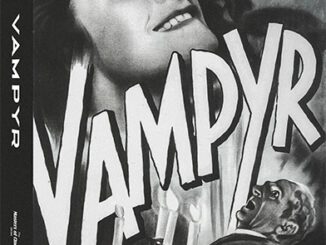
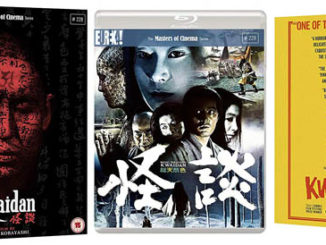

Be the first to comment